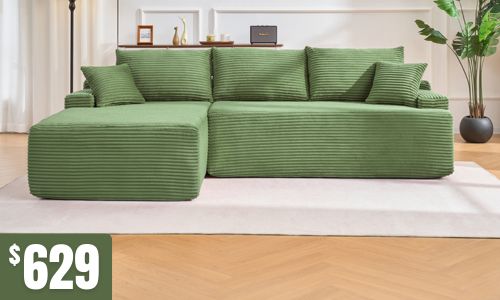Posts tagged with 'adjustable desks'
 In today's fast-paced world, a well-designed home office is not just a luxury; it's a necessity. Whether you're working remotely, freelancing, or simply need a dedicated space for tasks, creating an ergonomic home office is vital for productivity, comfort, and overall well-being. In this article, we'll explore the importance of ergonomic furniture and share valuable tips to help you elevate your home office setup.
In today's fast-paced world, a well-designed home office is not just a luxury; it's a necessity. Whether you're working remotely, freelancing, or simply need a dedicated space for tasks, creating an ergonomic home office is vital for productivity, comfort, and overall well-being. In this article, we'll explore the importance of ergonomic furniture and share valuable tips to help you elevate your home office setup.
Understanding Ergonomics:
Ergonomics is the science of designing workspaces and equipment to enhance human efficiency and comfort. In the context of a home office, ergonomic design focuses on creating an environment that reduces the risk of discomfort, strain, and injury while maximising productivity. It's all about finding the right balance between comfort and functionality.
Investing in Ergonomic Furniture:
- Ergonomic Chairs: Start with a high-quality ergonomic chair that provides proper lumbar support and adjustable features. Look for chairs with adjustable armrests, seat height, and backrest recline. Your chair is the foundation of your home office comfort.
- Height-Adjustable Desks: A height-adjustable desk allows you to switch between sitting and standing throughout the day. This not only promotes better posture but also reduces the risk of prolonged sitting-related health issues.
- Monitor Stands and Mounts: Position your computer monitor at eye level to prevent neck strain. Monitor stands or wall mounts can help you achieve the ideal viewing height and angle.
- Ergonomic Accessories: Invest in accessories like an ergonomic keyboard and mouse to reduce the risk of wrist and hand strain. An adjustable monitor arm can also be helpful for positioning your screen optimally.
Tips for an Ergonomic Home Office:
- Proper Chair Height: Adjust your chair so that your feet rest flat on the floor, and your knees are at a 90-degree angle. This promotes good blood circulation and reduces pressure on your lower back.
- Keyboard and Mouse Placement: Keep your keyboard and mouse close enough that you can use them comfortably without straining your shoulders or wrists. Your arms should be parallel to the ground.
- Screen Placement: Position your monitor at eye level and about an arm's length away from your face. This minimises neck strain and ensures you're not hunching over or looking down.
- Take Regular Breaks: Incorporate short breaks into your work routine. Stand up, stretch, and move around to prevent prolonged sitting-related issues. Consider using a timer or an app to remind you to take breaks.
- Organise Your Workspace: Keep your workspace clutter-free. A well-organised desk reduces distractions and enhances your focus.
- Proper Lighting: Ensure your home office has adequate, glare-free lighting. Natural light is ideal, but if that's not possible, use task lighting to illuminate your workspace.
- Personalise Your Space: Add personal touches to your home office to make it a comfortable and inspiring place to work. Plants, artwork, and décor can create a positive atmosphere.
Your home office should be a space where you can work comfortably and efficiently. By investing in ergonomic furniture and implementing ergonomic principles, you can create a workspace that not only promotes productivity but also supports your physical well-being. Remember that a well-designed home office is an investment in your health and work performance, so take the time to set it up properly. With the right ergonomic furniture and habits, you can elevate your home office experience and make it a place where you thrive.
 In today's fast-paced and competitive business world, fostering creativity and innovation is crucial for companies to stay ahead. One often overlooked aspect of creating an environment that promotes creativity and innovation is office furniture. The right furniture can have a significant impact on the overall design and functionality of an office space, leading to improved productivity and inspiring ideas. In this article, we will explore the role of furniture in designing office spaces that stimulate creativity and innovation.
In today's fast-paced and competitive business world, fostering creativity and innovation is crucial for companies to stay ahead. One often overlooked aspect of creating an environment that promotes creativity and innovation is office furniture. The right furniture can have a significant impact on the overall design and functionality of an office space, leading to improved productivity and inspiring ideas. In this article, we will explore the role of furniture in designing office spaces that stimulate creativity and innovation.
How does office furniture affect creativity and innovation?
Office furniture plays a vital role in shaping the physical environment and can greatly influence the mindset and behavior of employees.
Here's how it impacts creativity and innovation:
- Ergonomics: Ergonomically designed furniture ensures employees are comfortable and can focus on their work without distractions or discomfort. Properly aligned chairs, adjustable desks, and supportive seating promote better posture, reduce physical strain, and improve overall well-being, enabling individuals to think more clearly and creatively.
- Flexibility and adaptability: Furniture that allows for easy reconfiguration and adaptability promotes collaboration and creative thinking. Modular workstations, movable partitions, and flexible seating options encourage spontaneous discussions, brainstorming sessions, and cross-functional collaboration.
- Aesthetics and inspiration: Well-designed and visually appealing furniture can create a stimulating environment that inspires creativity. Incorporating elements of color, texture, and unique designs can enhance the aesthetic appeal of the workspace and evoke positive emotions, leading to more innovative thinking.
What are some furniture features that support creativity and innovation?
To foster creativity and innovation, office furniture should possess certain features that support a dynamic and collaborative work environment.
Here are some essential features to consider:
- Collaboration zones: Furniture arrangements that facilitate team collaboration, such as modular desks, comfortable lounge seating, and shared workstations, encourage open communication and idea exchange among employees.
- Standing desks: Adjustable standing desks promote movement and allow employees to switch between sitting and standing positions. This not only improves physical health but also stimulates creativity by providing a change in perspective and posture.
- Privacy options: While collaboration is important, employees also need privacy when working on focused tasks or brainstorming individually. Furniture solutions like privacy screens, soundproof pods, or individual workstations with adjustable dividers offer the necessary privacy without isolating employees entirely.
- Storage solutions: Clutter can impede creativity. Ample storage options, such as filing cabinets, shelves, and organisational units, help keep the workspace tidy and minimise distractions, enabling employees to stay focused and generate innovative ideas.
How can furniture layout contribute to creativity and innovation?
The layout and arrangement of furniture within an office space can significantly impact creativity and innovation.
Consider the following aspects:
- Open plan design: An open layout promotes transparency, communication, and collaboration. By removing physical barriers and encouraging free movement, employees are more likely to interact, share ideas, and innovate.
- Zones for different activities: Creating designated areas for specific activities, such as brainstorming zones, quiet zones for focused work, and relaxation areas, allows employees to choose spaces that best suit their needs at different stages of the creative process.
- Natural light and views: Positioning furniture to maximize natural light and provide access to outdoor views has a positive impact on creativity. Sunlight and nature views help reduce stress, enhance mood, and boost cognitive performance.
Designing office spaces for creativity and innovation goes beyond aesthetics and functional considerations; it includes the strategic selection of furniture. The right furniture can contribute to a positive work environment, stimulate creativity, and foster innovation among employees. By prioritising ergonomic design, flexibility, collaboration, and technology integration, companies can create an inspiring workspace that nurtures the creative potential of their teams. Ultimately, investing in well-designed office furniture is an investment in the future success and growth of an organisation.
Check our office furniture for your next creativity upgrade!




.jpeg)

 (3).jpeg)
